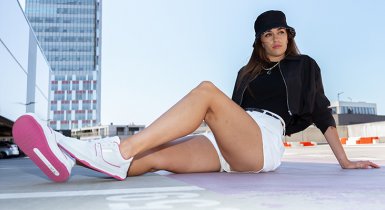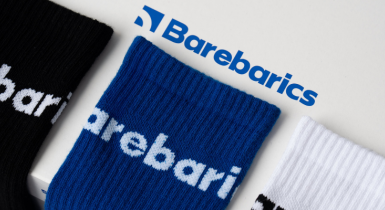Foot Exercises: How to Strengthen Your Feet?
Weakness in the legs, painful soles of feet, or heel pain can easily disrupt your day. Sensitive feet or sore heels don’t just make walking unpleasant – they can stop you in your tracks. Luckily, you can fix this with the right exercises. By strengthening the muscles in your feet and legs, you reduce discomfort and prevent unnecessary injuries. In this article, you’ll find practical tips and specific exercises to get you started.
Table of contents
Why Is It Important to Strengthen Your Feet?
In regular shoes, your arch is propped up by padding. That means your foot muscles don’t need to work much – the support does the job for them. Over time, your muscles weaken, and your legs get tired more quickly. Foot strengthening exercises wake up these “lazy” muscles. They support your arch, improve stability, and help your feet handle more without pain.
By moving and feeling the ground more consciously, you also boost brain function. Your feet are packed with nerve endings. When you shut them away in stiff shoes, you lose a lot of sensory input. But when you let them move naturally – whether during exercise or in barefoot shoes – your nerves come alive. You feel more, your focus sharpens, and even your mood improves.
How Do Exercises Affect Heel Pain and How Should You Do Them?
Heel pain – especially the sharp kind you feel first thing in the morning – is often caused by strain on the tissue under the heel (plantar fascia). This is usually linked to weak foot muscles, tight calves, and the fact that feet in regular shoes don’t have to do much.
Targeted flat feet exercises and mobility work can help:
- release overworked tissues,
- strengthen the area around the heel,
- and improve how weight is distributed, so pressure spreads more evenly across the sole.
How to Do It:
- Focus on exercises for both your feet and ankles.
- Start without extra weight, just using your own body. The most important thing is to learn the movements correctly and without pain.
- Once your feet adapt, add resistance with a band, dumbbell, or balance pad.
- Exercise mainly in the morning (when the fascia is tightest) and in the evening (to release after a long day on your feet).
- If the exercises hurt more than they help, scale back – your muscles need time to adjust.
Which Foot Exercises Are the Most Effective?
1. Short Foot – arch strengthening
This is the foundation for supporting your arch muscles. Sit down, place your foot flat on the ground, and imagine shortening the length of your foot – without lifting your toes or heel. Gently pull the middle of your foot back toward the heel. Hold for 5–10 seconds and release. Repeat 10–15 times.
2. Towel Scrunches – toe coordination
Place a towel on the floor. Sit down and try to pull it toward you with your toes. The key is slow, precise movement. This exercise improves toe strength and coordination.
3. Calf Raises – rising onto your toes
Stand with feet hip-width apart. Slowly rise onto your toes, as if reaching for the top shelf. Lower back down with control. Once you can do this without wobbling, try it on one leg. This exercise strengthens calves, the Achilles tendon, and stabilizes the entire foot.
4. Walking on Toes and Heels
Walk on your toes for 30 seconds – slowly, paying attention to every step. Then switch to 30 seconds on your heels. Repeat 3–5 times.
5. Single Leg Balance with Ankle and Toe Work
Stand on one foot. Stay calm, even if your balance feels shaky at first. Slowly rotate your ankle, spread your toes as wide as possible, then squeeze them back together. This is excellent for proprioception – helping your body know exactly where your foot is at any given moment.
How Can Barefoot Shoes Help with Foot Pain?
Barefoot shoes let your feet do what they’re designed to do – move naturally, engage muscles, and respond to the ground beneath you. A wide toe box frees your toes, while the flexible sole activates muscles that regular shoes leave dormant. With less pressure on your heel, you gain more control over every step and move in a healthier way.
Tips for getting started:
- Begin with barefoot shoes at home or on short walks. We explain how long the transition takes in more detail in our blog.
- Pay attention to how your feet react. Tired feet are fine, but if you feel sharp pain, that’s a sign to slow down.
- Gradually increase your wearing time.
? Find your size with our size guide
? Discover the latest collection of barefoot sneakers
? Contact us if you need advice
Sources:
- Lee, J. et al. (2023). Effect of strengthening exercises on plantar pain reduction and foot function. Journal of Foot and Ankle Research.
- Lee, W. C. C. et al. (2024). The impact of minimalist footwear on foot muscle strength and pain in plantar fasciitis. Gait & Posture.
- Miller, E. E. et al. (2022). Barefoot training improves proprioception and postural stability. Journal of Biomechanics.




